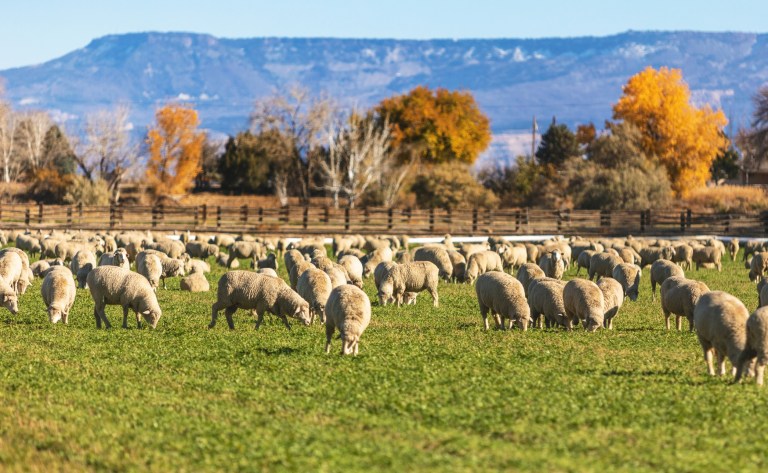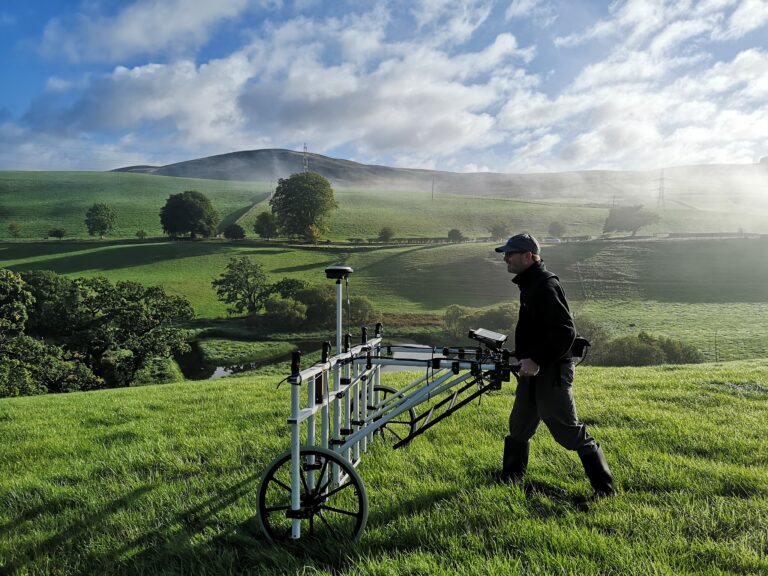This article was originally written by Lauren Beavis for SWNS — the U.K.’s largest independent news agency, providing globally relevant original, verified, and engaging content to the world’s leading media outlets.
Regular rainbows are already beautiful enough to make us stop and stare in the street — but the above image of a full-circle one is so striking, it was named the overall winner of the Royal Meteorological Society’s 2025 Standard Chartered Weather Photographer of the Year Competition. Now in its 10th year, the annual contest illuminates the most stunning weather and climate images taken by amateur and professional photographers around the globe, all in the name of raising awareness about climate change.
Chosen from over 4,000 images, the winners were selected by an international panel of experts from the fields of weather and climate, photography, and journalism. Along with the overall winner and runner-up, photos were recognized in the Public Vote, Climate Award, Mobile, and Young categories.
Titled “The Gorgeous Ring,” the circular rainbow shot was snapped by Geshuang Chen and Shuchang Dong, and earned the pair an approximately $6,500 cash prize.
“It was drizzling on Lugu Lake [in China’s Yunnan province],” Dong, a Chinese engineer and astronomy photographer, said on the contest website. “I flew my drone to a height of 500 meters, passed through the rain curtain, with my lens facing away from the sun, and captured a complete circular rainbow, which was a ring given by the sun to the lake.”
The judges found this image particularly special because it captured not only a rare view of a complete rainbow, but also a moment of “perfect alignment,” with the small island framed precisely at its center.
Second place overall went to a powerful image by U.K. photog Jadwiga Piasecka, titled “Eunice III.” It was taken from a sheltered place out of reach of 2022’s Storm Eunice in Newhaven, England, where winds were gusting at over 80 mph.

“From my vantage point, I watched enormous waves battling against the sea wall, sending dramatic sprays of water high into the air highlighting just how immense the storm’s fury truly was,” Piasecka said.
Lukáš Gallo, from the Czech Republic, won the Public Vote category and third place overall for his photo “Sky Surfing” — which shows a perfectly timed shot of rare fluctus clouds, formed when there’s “a sharp difference in wind speed or direction between two layers of air, similar to the way wind can whip up waves on the surface of the sea,” per the website. “The result is a spectacular series of cloud curls that look like breaking ocean waves, as well as a clear visual warning of turbulence.”
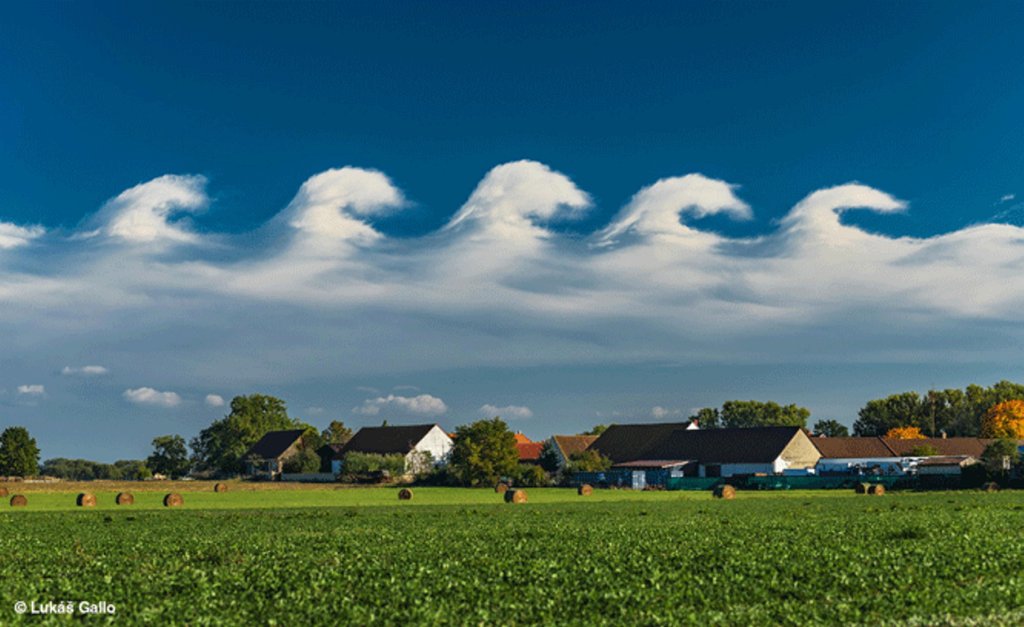
Scroll below to see the rest of this year’s winners.
Winner, Climate Award

“A spiraling column of dust and wind dominates the Texas Plains in this striking image, captured by photographer Jonah Lange on April 25, 2025, near [the city of] Sudan. ‘This tornado picked up tons of dust as it landed. I peered on from the south side as it moved slowly off to the east,’ he says. ‘West Texas is known for dust … as shown here!’
“The tornado churns with intense energy, its collar cloud clearly visible as it pulls red soil into the air. A smaller satellite vortex dances nearby, while an impressive dark hail core looms behind the spiral. On the day this image was taken, hailstones up to 3 inches in diameter were reported. Judge Mette Lampcov notes: ‘In Texas, this is a very real image. You feel the power of weather and nature impacting the land.’”
Runner-Up, Climate Award

“Two men ride through a road strewn with debris, heading home to what remains after Typhoon Rai (locally named Odette) tore across Siargao Island, Philippines, in December 2021. Photographer Maria del Pilar Trigo Bonnin took the shot from the back of another motorbike as they made their way through the devastation. ‘I handheld the camera and captured the moment quickly — the stillness, the chaos, and the long shadows told the story of what we had just lived through.’ Typhoon Rai struck as a Category 5 storm, with winds exceeding 155 mph. It rapidly intensified over warm ocean waters before landfall, a pattern that is becoming more common with climate change. For many in Siargao, the storm was unlike anything they had seen in decades. Trees were flattened, homes torn apart, and lives upended in a matter of hours.
“The low afternoon sun casts long, cinematic shadows through the smoke and wreckage. ‘So much contrast between the lovely sunshine and the sheer devastation,’ noted judge Phillipa Drew, ‘and the normality of the feeling of “heading home.” Bits of clothing and upturned boxes are things we’ve all experienced, but not on that level of destruction.’ Fellow judge Rezaur Rahman reflected that ‘this feels like a decisive moment for these people.’ This quiet, determined moment clearly shows that the impacts of climate change are not distant or abstract, they are already reshaping lives, landscapes, and the homes we hope to return to.”
Runner-Up, Public Vote
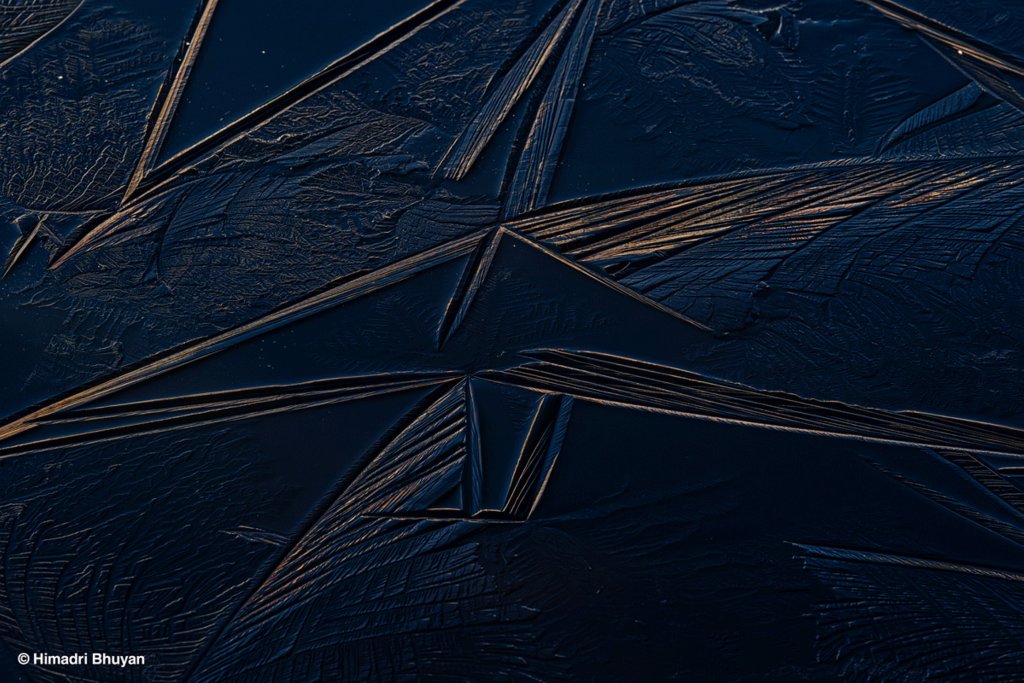
“Captured in the early winter chill of Arunachal Pradesh, India, this image by Himadri Bhuyan reveals a frozen lake surface etched with delicate, fractal-like ice patterns. ‘The subzero temperature was hurting my hands and feet,’ he recalls, ‘but the frozen patterns caught my attention, and I had to stop and capture them.’ Taken near Pangateng Tso Lake in mid-November, the scene may look serene, but beneath its stillness lies a subtle sign of a changing climate.
“As water freezes, it expands and crystallizes from the edges inward. Variations in temperature, impurities, and wind can create striking surface patterns: ridges, lines, and bubbles etched in the ice as it forms. Each line captures a moment in the lake’s freezing process: a visible record of changing conditions.”
Third Place, Public Vote
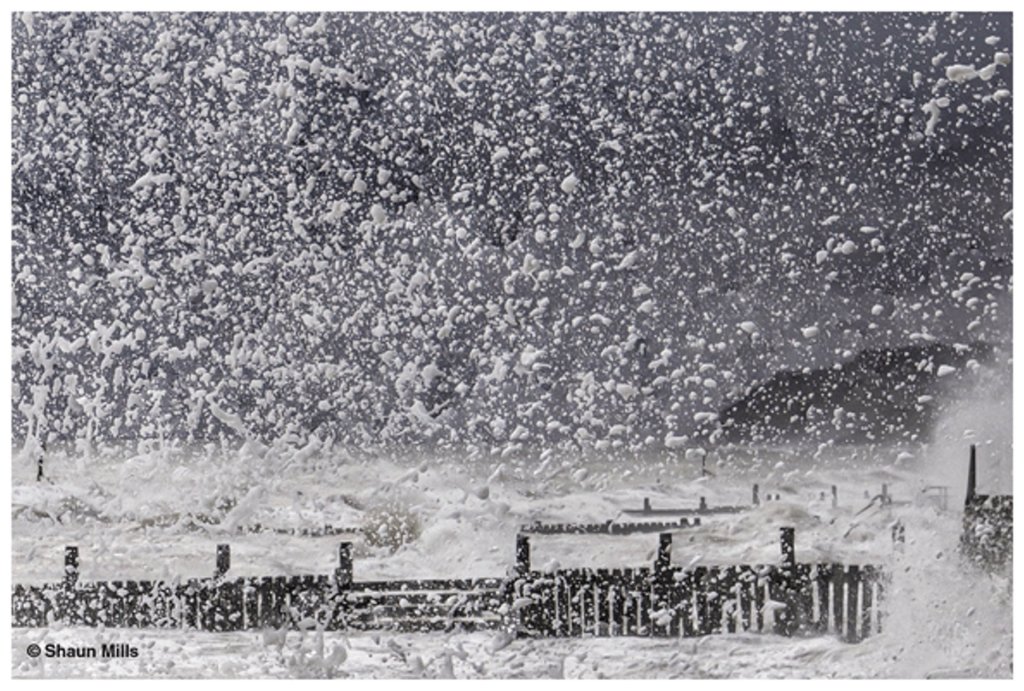
“During a storm on Britain’s east coast, waves crash against the sea defenses at Overstrand, Norfolk, sending sea spray high into the air. Photographer Shaun Mills writes: ‘A photo trip to the Norfolk coast coincided with a storm, and I took the opportunity to capture some incredibly rough seas. The image was taken to isolate the individual spray, giving the impression of a snowstorm.’
“Sea spray forms when strong winds tear across wave crests, ejecting tiny droplets of saltwater into the air. These airborne droplets can range in size from visible bursts to microscopic particles that influence cloud formation and weather patterns. Capturing them in motion requires fast shutter speeds and careful timing. Here, the image was cropped to fill the frame with the dynamic texture of spray.”
Winner, Mobile Category
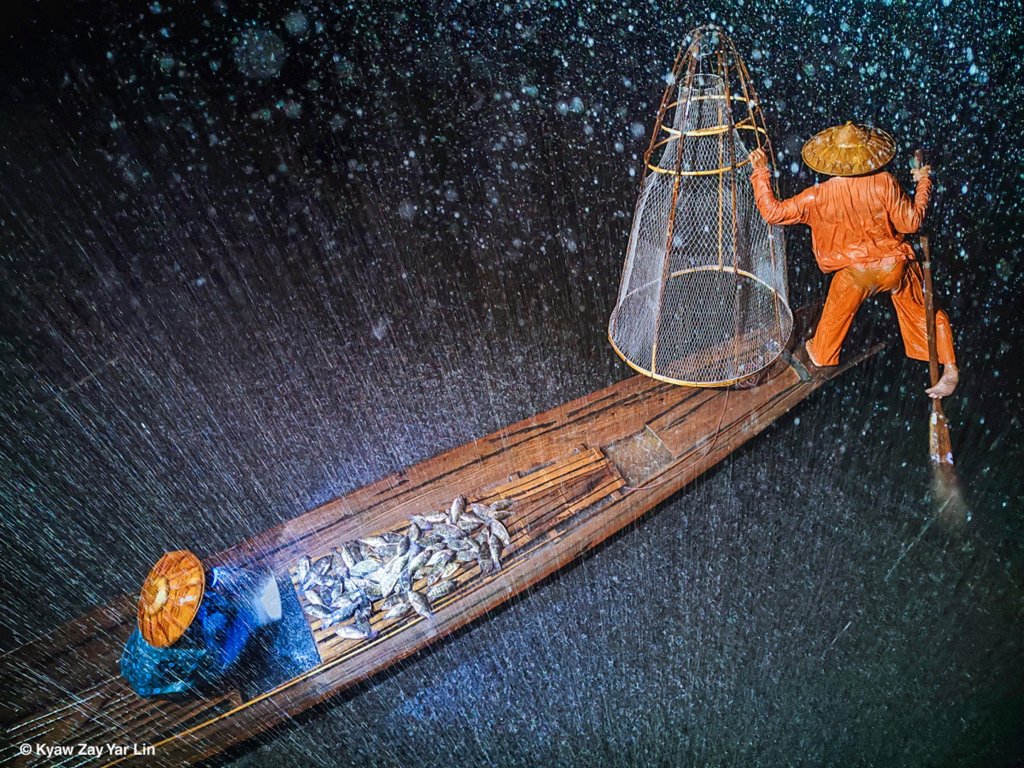
“This photo captures the urgent feeling of being caught in a sudden downpour. Two fishermen work quickly: one paddling through the dark water, the other bailing it out of the boat. Their bright orange and blue clothes stand out vividly, just like the heavy raindrops streaking across the frame. The motion blur of both the fishermen and the rain make the viewer feel part of the action, caught in the sudden intensity of a tropical storm. Raindrops fall in sheets and splash against the murky lake below as water fills the boat’s base.
“The rower uses the Intha people’s distinctive technique, standing at the stern with one leg wrapped around a single oar, enabling smooth, flowing paddling through the lake’s reeds. Though Inle Lake is shallow, less than two meters deep on average, it supports a rich ecosystem and a way of life, both now under threat.”
Runner-Up, Mobile Category
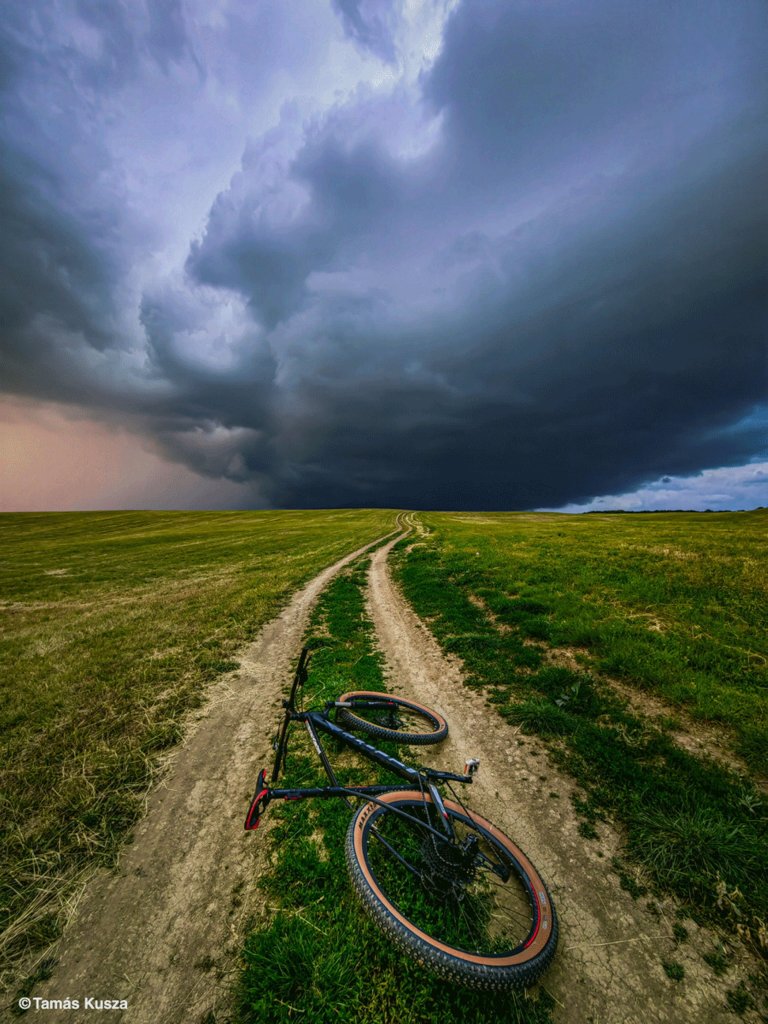
“A dirt track cuts through the countryside in Ožďany, Slovakia, drawing the eye toward a sky heavy with dark, swirling clouds. In the middle of the path, a mountain bike lies still, its rider momentarily grounded by the sight ahead. ‘I have always been drawn to storms,’ says photographer Tamás Kusza. ‘I love watching the sky darken, the clouds descend, and the majestic power of nature slowly unfold. Whenever I can, I hop on my bike and head for the border, where the sky and the earth meet, and where storms are born.’
“That day, he watched dark clouds gather on the horizon. ‘I knew a special moment was coming. I rode the dirt road far enough until I had to stop: The sight was almost paralyzing. I put my bike down and took out my camera. I stood there, facing the heart of the storm, where the power of nature and my own courage met. It was the moment before the silence. The world silently watched my steps. Would I stay and capture the storm, or turn back? But I knew: I was always heading toward the storm.’”
Winner, Young Category
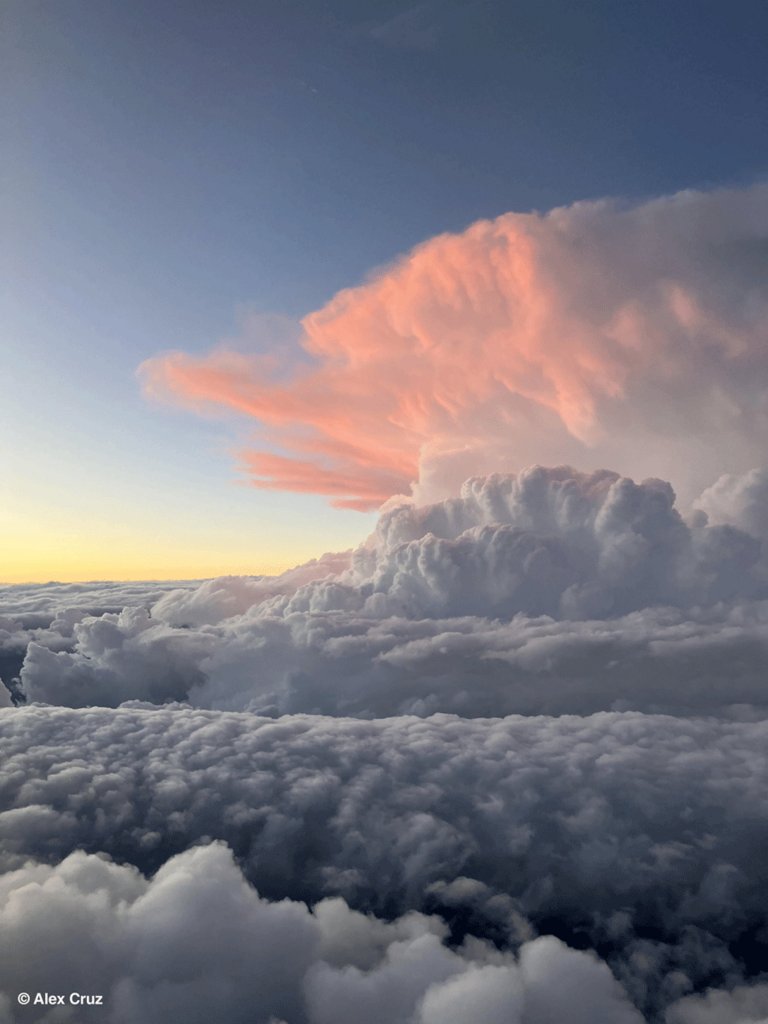
“Captured from a passenger plane flying between Washington, D.C. and Orlando, Florida, this photo reveals a spectacular view of a thunderstorm cloud glowing pink against a deepening blue sky. ‘We were flying alongside a lightning storm, which was a pretty cool sight,’ says young photographer Adrian Cruz.
“The enormous cloud is a cumulonimbus, the towering kind that forms during thunderstorms. These gigantic clouds are created when warm, moist air rises quickly into the sky. As it climbs, the air cools and water vapor condenses into tall clouds. When the updraughts are strong enough, they can punch high into the atmosphere, all the way to the tropopause: the boundary between the lower atmosphere (the troposphere) and the stratosphere. Once it reaches its maximum height, the cloud spreads out, forming the classic anvil shape seen in this photo.”
Runner-Up, Young Category
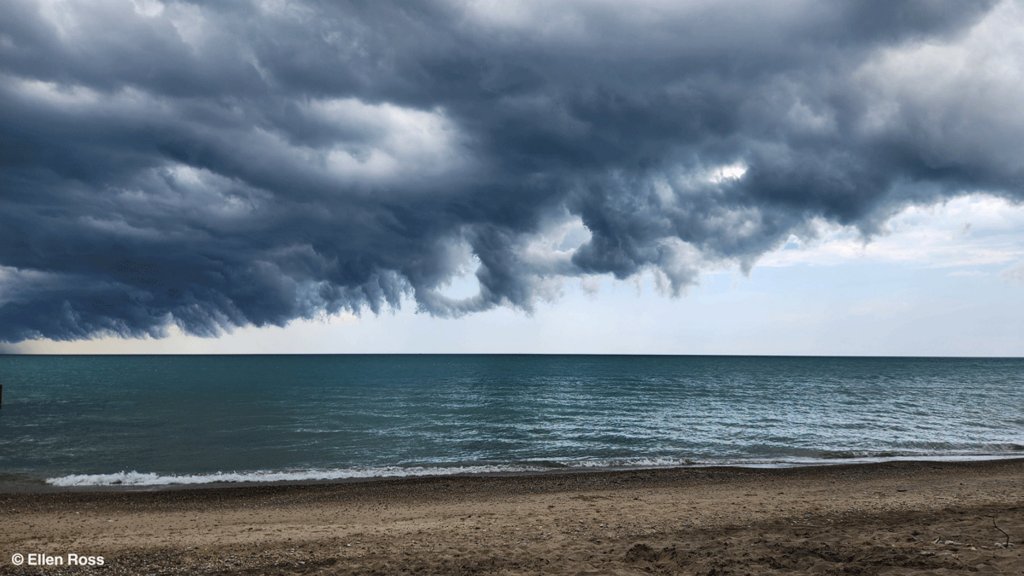
“‘My dad and I were paddleboarding on Lake Michigan when this storm blew in,’ says young photographer Ellen Ross. “I quickly grabbed my dad’s phone and took this photo, because it’s rare to see such an interesting storm. Also because of the small patch of blue sky behind it. I think it shows good days to come.’ That small patch of blue caught the eye of the judges too. ‘The glimpse of blue sky beyond lets you know that the storm won’t last forever,’ said judge Dan Green. ‘I absolutely love this photo — a weather drama unfolding over the lake. The clarity of the storm front is exceptional, with some interesting detail on the edges.’
“The photo captures a dramatic moment of transition. A towering storm cloud sweeps in across the water, its dark underside casting a visible shadow over the lake’s surface. ‘It’s not often that such a clear change of type can be captured, but this one does it beautifully,’ added judge Becky Mantin. ‘This is simply a great weather shot!’ These clouds are likely to be part of a storm front, common over large bodies of water when warm, moist air meets cooler conditions: a classic sign of unstable weather. But, as Ellen spotted, even the most dramatic weather often passes quickly, leaving clear skies ahead.”







